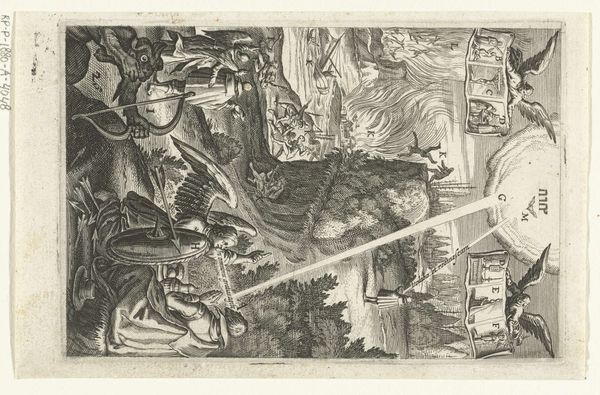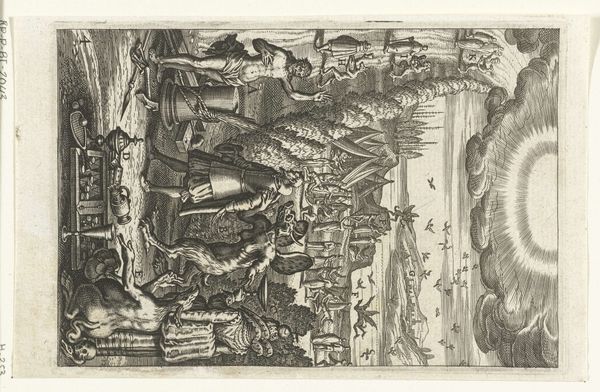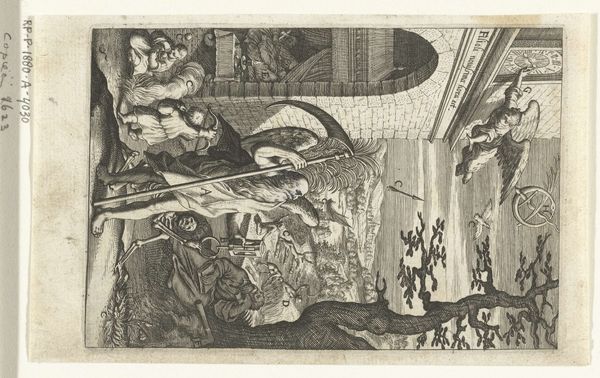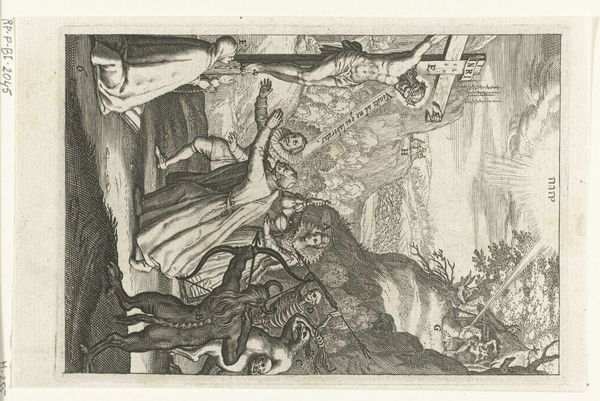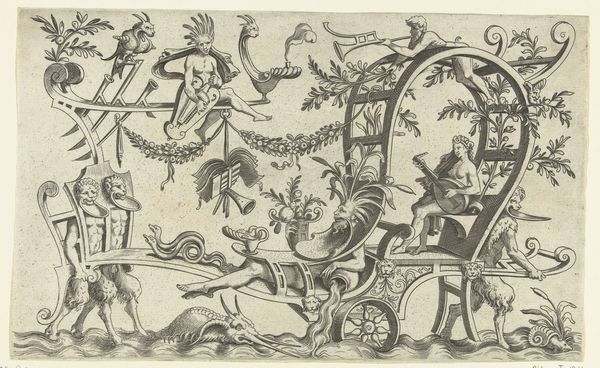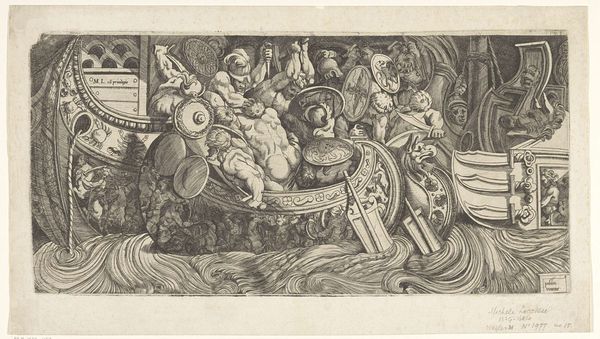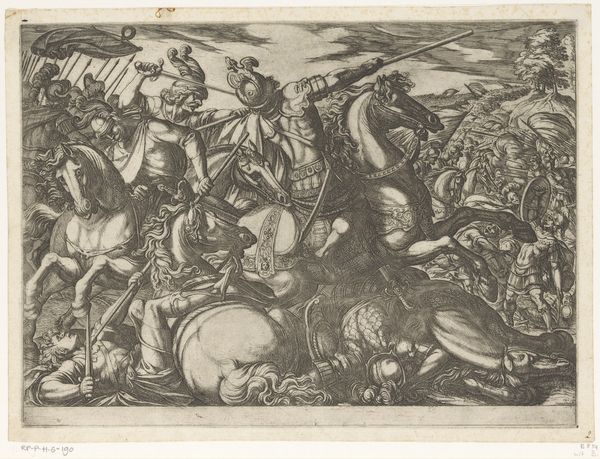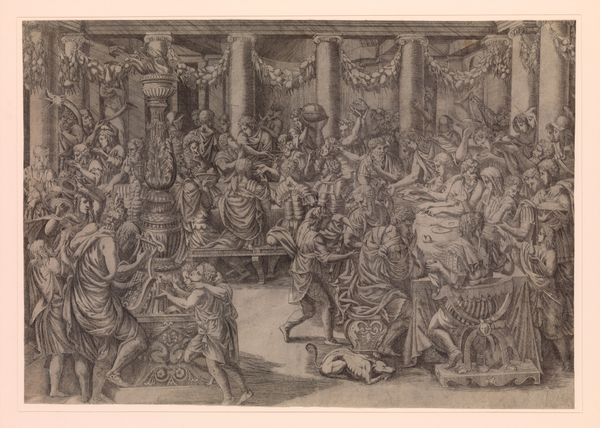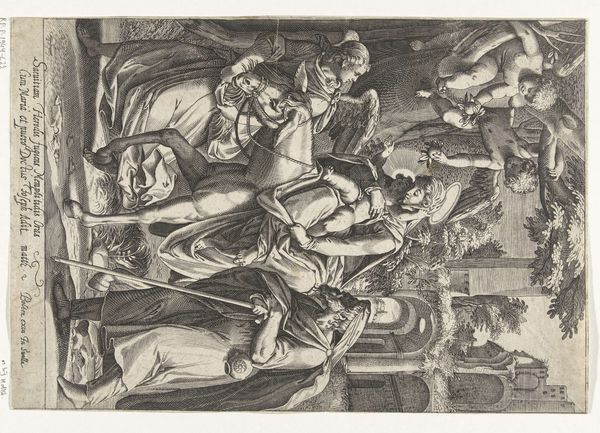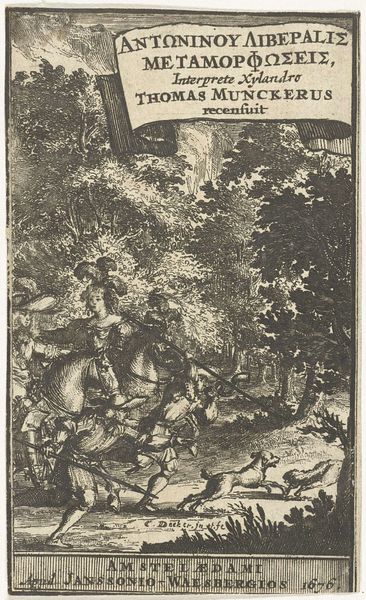
Embleem met bisschop die een man beschermt tegen de verzoekingen van een duivel 1620 - 1623
0:00
0:00
anonymous
Rijksmuseum
drawing, ink, engraving
#
drawing
#
allegory
#
baroque
#
pen drawing
#
figuration
#
ink
#
engraving
Dimensions: height 135 mm, width 93 mm
Copyright: Rijks Museum: Open Domain
Editor: Okay, next up we have a drawing from the early 1620s, attributed to an anonymous artist. It's called "Embleem met bisschop die een man beschermt tegen de verzoekingen van een duivel," done in pen and ink. It’s incredibly detailed… chaotic, almost. What do you see in this piece, especially considering the religious context? Curator: Ah, yes! It feels almost medieval in its fervor, doesn't it? See how the Bishop acts as a fulcrum, this anchor, against the swirling chaos of temptation. Imagine the artist, dipping his pen, wrestling with their own demons, or perhaps celebrating their faith? I'm particularly drawn to the visual argument it presents, what temptations are presented, and what the reactions seem to say. It feels so incredibly *human,* and therefore relatable across the centuries. Does the dragon look cuddly to you? Editor: Not particularly cuddly, no! It is striking how the bishop figure is kind of centrally located and still… passive almost? Do you think there's some element of doubt or... interiority happening that could take away the literal reading that "the Bishop protects"? Curator: Exactly! And look at the way light and shadow are used – almost as characters in their own right. Is the Bishop triumphant or simply burdened? What’s being protected? Faith, sure, but is it innocence or simple complacency? The Baroque period loved this interplay, where certainty crumbled into beautiful, morally-flexible ambiguity. And those "demons"! Look closer at their little faces… some are actively inviting... and many people seem pretty comfortable accepting! The work questions how protection manifests – and who really needs it. Don't you think? Editor: That's fascinating – the ambiguity adds so much depth. I initially saw it as a straightforward morality tale, but now I appreciate how much it leaves open to interpretation. Curator: Precisely! It's like life itself, really – less a stark battle and more of a… negotiation. That devil may not be so bad… he just doesn't get cake! Editor: This makes me realize how much context influences what you see and what you believe is the artist's intention! Curator: Intention… the mischievous poltergeist of art history. Ultimately, it whispers whatever *we* want to hear!
Comments
No comments
Be the first to comment and join the conversation on the ultimate creative platform.
